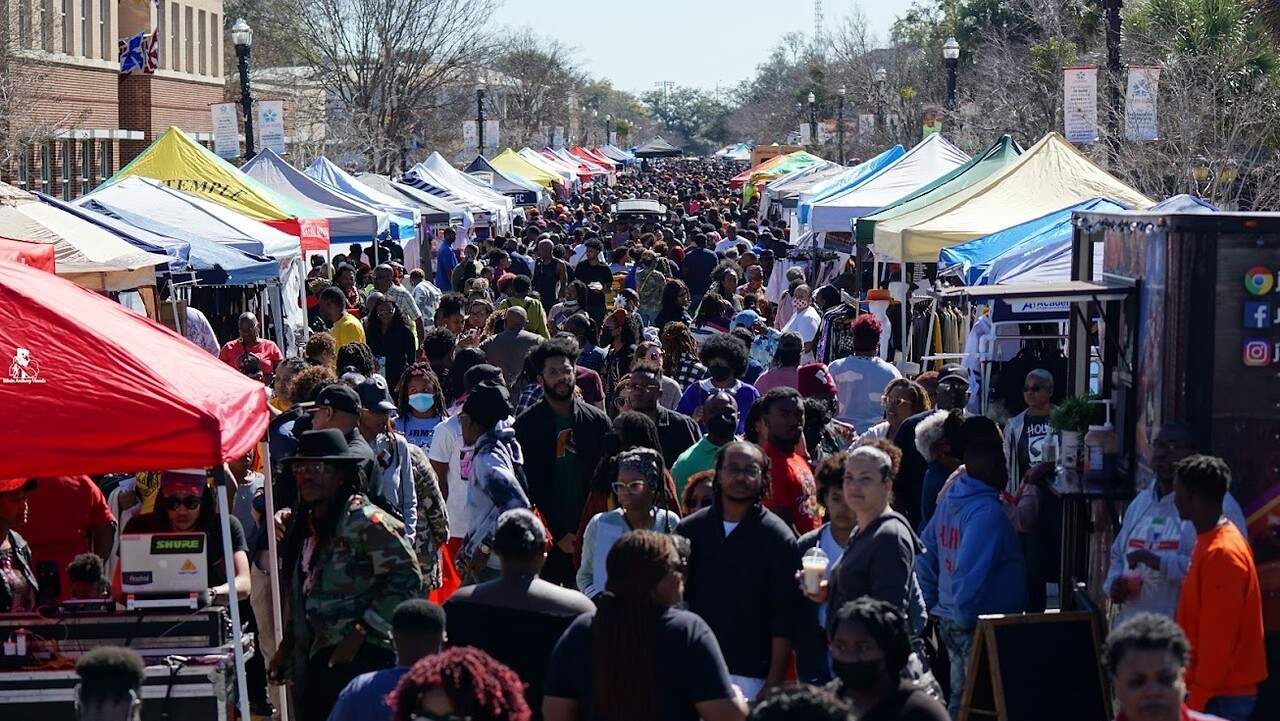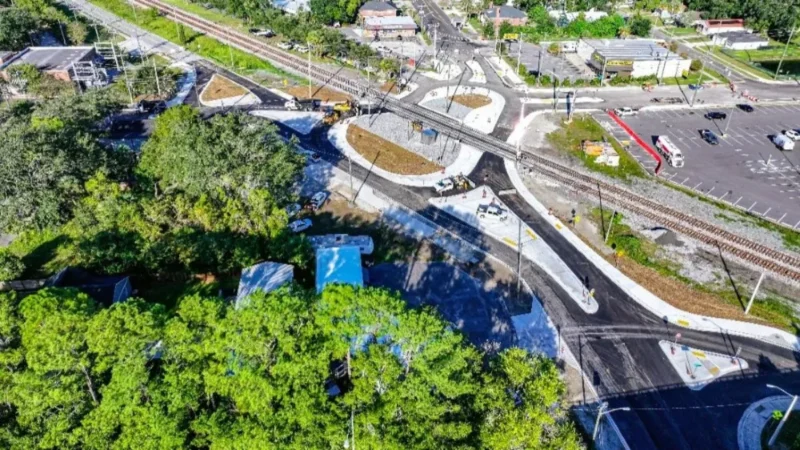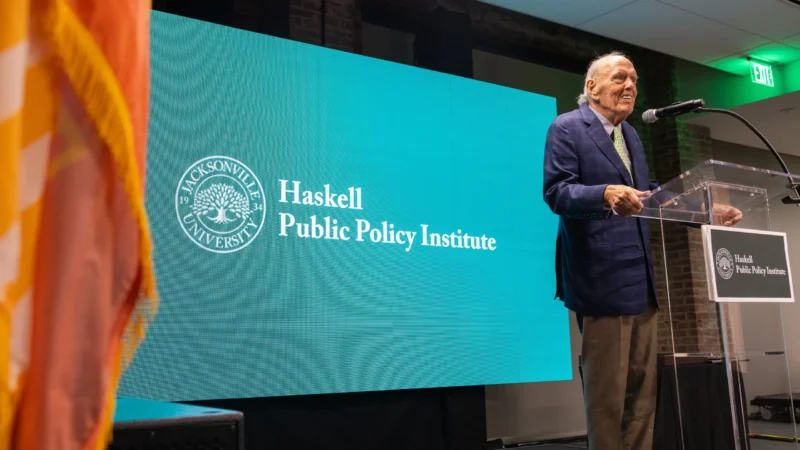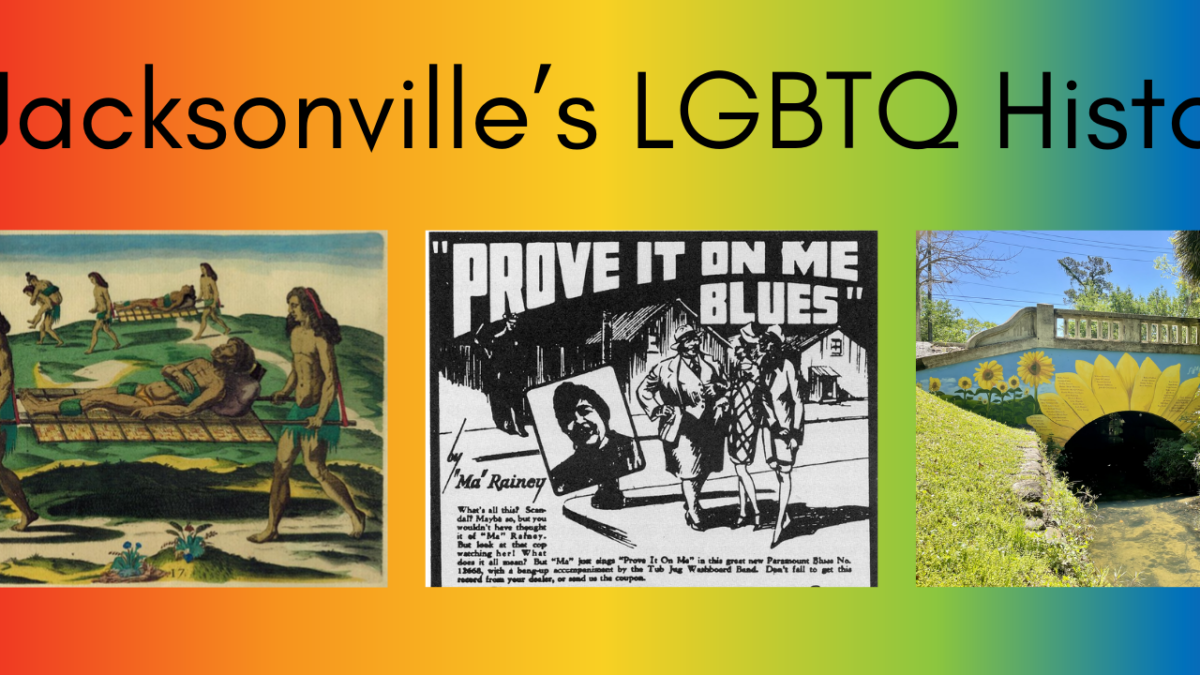
On Tuesday, June 11, Mayor Deegan filed formal legislation for the $1.4 billion stadium development agreement between the city of Jacksonville and the Jacksonville Jaguars. However, one of the most popular elements of the deal, a $300 million community benefits agreement, could be on the City Council chopping block.
The agreement could provide tangible benefit to an adjacent urban core neighborhood seeking to survive the risk of displacement and gentrification.
The Eastside’s historical importance

Bordered by Springfield to the west and the St. Johns River to the east, the Eastside is a collection of Gullah Geechee communities also known locally as OutEast. Dating back to 1869, it was quickly settled by freedmen and women attracted by inexpensive housing and employment at the docks and sawmills along the riverfront.
Home to Old City Cemetery and the city’s first public park established for Black residents, the Eastside was also home for well-known people throughout history, like Florida’s first African-American millionaire and founder of Nassau County’s American Beach, Abraham Lincoln Lewis; anthropologist and author Zora Neale Hurston; civil rights icon A. Philip Randolph; and the only athlete to win both an Olympic gold medal and Super Bowl ring, Robert “Bullet Bob” Hayes.
The Eastside also played a transformational role in the development of the nation. In 1916, the Chicago Defender published Eastside resident Matthew Ward’s poem “Bound for the Promised Land,” which contributed to one of the largest movements of people in the U.S. The movement of about 6 million Black Americans from the South is now recognized as the Great Migration, which led to New York’s Harlem Renaissance and the growth of several large cities in Northern, Midwestern, and Western states. Because of its historical significance, the neighborhood was designated to the National Register of Historic Places in 2023.
Redlined since the 1930s, the physical landscape of the neighborhood was negatively impacted with the opening of the Mathews Bridge in 1953, expressways in the 1960s, and the Eastside-Springfield urban renewal program of the 1970s. Today, the Eastside is engaged in a variety of “withintrification” strategies intended to protect the community against displacement.
‘Withintrification’ and overcoming the risk of gentrification

Many cities are looking for solutions to the issues caused by gentrification. One emerging strategy is “‘withintrification,” when the changes and investment are driven by the current residents instead of outside developers, planners, consultants and politicians. It involves identifying assets in the community, along with common objectives, and then raising the value of the neighborhood at a pace appropriate for the existing community, not displacing it.
While the common thought is that displacement is inevitable as revitalization occurs, the Eastside neighborhood is working to become the latest example of withintrification that suggests otherwise. Recent successes include the A. Philip Randolph Boulevard corridor’s getting designated as Jacksonville’s first Florida Main Street program, the rehabilitation of the Debs Store, and the launch of programs to preserve affordable housing, increase homeownership and alleviate heir’s property challenges for residents.
In partnership with the Eastside community, the proposed community benefits agreement is intended to play an important role in protecting and benefitting a neighborhood that has economically suffered since consolidation and that’s most directly affected by the Jaguars stadium deal.
What is a community benefits agreement?

A CBA is a legally binding contract negotiated between a developer (such as a sports stadium developer) and a coalition of community organizations. The agreement outlines the benefits that the community will receive in exchange for supporting the development project.
Commitments to prevent displacement and gentrification, hiring local residents for construction and operation jobs, job training programs, fair wages, and provisions to build affordable housing units or provide funding for housing programs are typical components of a CBA. Local business support and investment in public amenities such as parks, recreational facilities, community centers, or other public spaces can also be included in CBAs.
When the Atlanta Braves developed Truist Park in Cobb County, a CBA there included commitments to hire local workers and invest in infrastructure. In California, the Los Angeles Football Club Stadium CBA agreement mandated local hiring, living wages for employees and the creation of a fund to support affordable housing
How will the CBA benefit the Eastside?

As currently proposed, the $300 million CBA split equally between the city and the team would be the largest in NFL history. Roughly a third, $105 million, would go toward Eastside withintrification initiatives. For the Eastside community, tapping the historic stadium investment for the benefit of an area at risk of being negatively impacted builds upon multiple goals identified by the City Council.
With the city’s up-front investment of $30 million in the community most affected by the stadium renovation, projects addressing affordable housing, preservation of historic assets, promoting small business formation and growth, and revitalization of the neighborhood’s key commercial corridors can be started immediately while additional CBA funds provided by the Jacksonville Jaguars continue to support these initiatives over the course of the 30-year stadium lease agreement.
If done right, the CBA can serve as a template for additional investment in similar economically challenged neighborhoods throughout the city.







